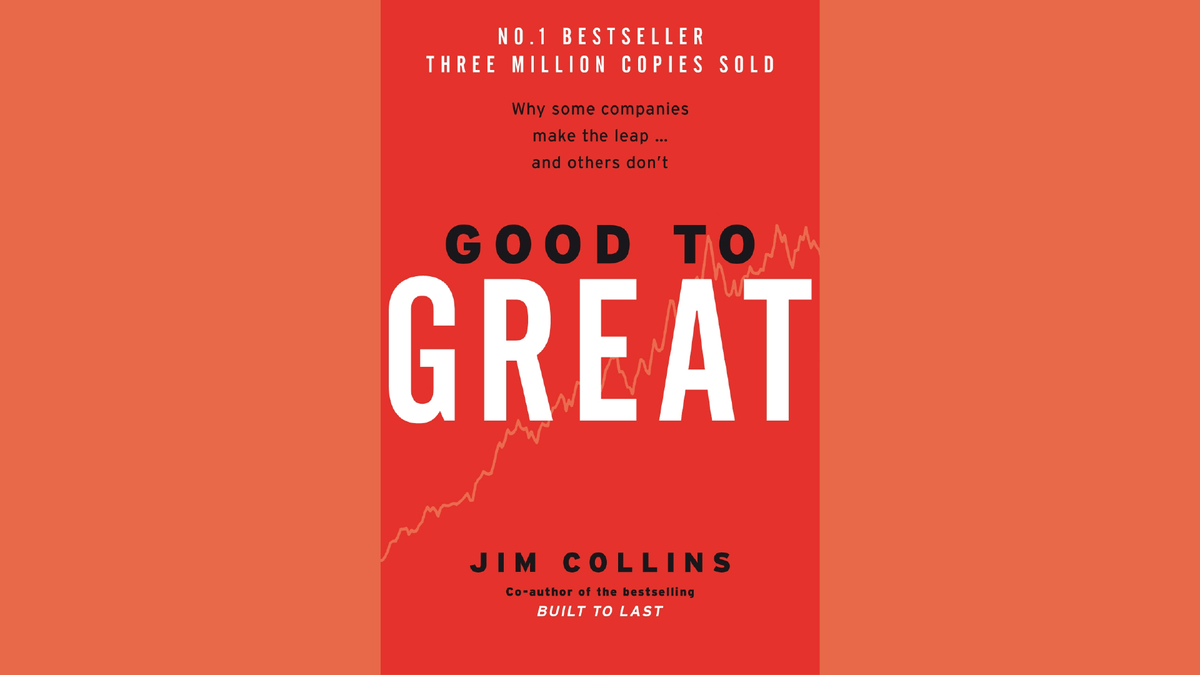The Inmost Cave: Tackling Core Entrepreneurial Challenges
Explore the “Approach to the Inmost Cave” in entrepreneurship, highlighting how critical insights from “Purple Cow” by Seth Godin and “Good to Great” by Jim Collins can address the challenges of creating a compelling business story and elevating business performance.

In my entrepreneurial journey, I’ve found that the “Approach to the Inmost Cave” is one of the most challenging yet rewarding stages. It’s a phase where I face my core challenges head-on and prepare for the crucial steps that will determine the success or failure of my venture. Here’s how I’ve navigated this pivotal stage:
Preparation and Planning
Strategizing the Business Plan:
• Detailed Market Analysis: I dive deep into understanding my target market, learning about customer demographics, preferences, and pain points. This research is crucial to refining and aligning my business strategy with market needs.
• Defining Objectives and Milestones: I set clear, measurable objectives and milestones to track progress and make necessary adjustments. This includes short-term and long-term goals for growth, revenue, and market penetration.
• Risk Management: Identifying potential risks and developing contingency plans is vital. I consider financial, market, and operational risks, which helps me navigate uncertainties effectively.
Assembling Resources:
• Securing Funding: I explore various funding options, such as venture capital, angel investors, loans, or crowdfunding. Presenting a solid business plan and demonstrating potential ROI is key to attracting investors.
“Innovation distinguishes between a leader and a follower.” – Steve Jobs
• Technology and Tools: Investing in the right technology and tools enhances productivity and efficiency. This includes software for project management, customer relationship management (CRM), and financial tracking.
• Building the Team: Hiring skilled and motivated individuals who share my vision is critical. This involves finding the right talent and fostering a collaborative and innovative company culture.
“Great vision without great people is irrelevant.” – Jim Collins
Entering a Competitive Market
Market Entry:
• Launch Strategy: I develop a comprehensive launch strategy that includes marketing, sales, and distribution plans. This involves identifying the right channels to reach my target audience and creating a buzz around my product or service.
• Competitive Analysis: Continuously monitoring competitors to understand their strengths, weaknesses, and market strategies helps me identify opportunities to differentiate and position my business effectively.
Identifying Niche Opportunities:
• Unique Value Proposition (UVP): Crafting a clear and compelling UVP highlights what makes my product or service unique and valuable. This can be based on features, pricing, customer experience, or innovation.
• Customer Segmentation: Identifying and targeting specific customer segments that are underserved or have unique needs allows me to tailor my offering and marketing efforts to meet those specific demands.
“Don’t find customers for your products, find products for your customers.” – Seth Godin

Facing Core Challenges
Encountering Market Obstacles:
• Regulatory Compliance: Ensuring that my business complies with all relevant laws and regulations involves obtaining necessary licenses, adhering to industry standards, and staying updated on regulatory changes.
• Adapting to Market Changes: Being flexible and responsive to market changes, such as shifts in consumer behavior, technological advancements, or economic fluctuations, requires continuous market research and agility in decision-making.
Customer Feedback and Iteration:
• Building Feedback Loops: It is crucial to establish mechanisms for collecting and analyzing customer feedback regularly, such as surveys, focus groups, and social media monitoring.
• Iterative Development: Using feedback to make continuous improvements to the product or service involves a cycle of testing, learning, and refining to ensure that the offering meets customer needs and exceeds expectations.
Building Allies and Gaining Insights
Networking and Mentorship:
• Industry Networks: Joining industry associations, attending conferences, and participating in networking events helps me build connections with other entrepreneurs, investors, and industry experts.
• Mentorship Programs: It is invaluable to seek out experienced mentors who can provide guidance, share insights, and offer support. Mentors help navigate challenges, identify opportunities, and provide valuable feedback.
Learning from Failures:
• Embracing a Growth Mindset: Failures must be viewed as opportunities for learning and growth rather than setbacks. Analyzing what went wrong, understanding the underlying causes, and applying those lessons to future endeavors is critical to my journey.
“Sometimes when you innovate, you make mistakes. It is best to admit them quickly, and get on with improving your other innovations.” – Steve Jobs
• Resilience and Adaptability: Developing the resilience to bounce back from failures and the adaptability to pivot when necessary involves being open to new ideas, experimenting with different approaches, and staying committed to the long-term vision.
Symbolic Death and Rebirth
Pivoting the Business Model:
• Identifying When to Pivot: Recognizing the signs that indicate a need for change, such as declining sales, customer dissatisfaction, or market shifts, requires a willingness to reevaluate the current approach and make bold decisions.
• Executing the Pivot: Implementing changes to the business model, which may involve altering the product or service, targeting a different market, or changing the pricing strategy, requires careful planning and clear communication to all stakeholders.
“The most important decisions that businesspeople make are not ‘what’ decisions, but ‘who’ decisions.” – Jim Collins
Personal Transformation:
• Developing Leadership Skills: Enhancing leadership capabilities, such as decision-making, communication, and emotional intelligence, is essential for guiding the team through challenges and inspiring confidence.
• Self-Reflection and Growth: Engaging in continuous self-reflection to understand personal strengths and weaknesses involves seeking feedback, pursuing professional development, and cultivating a mindset of continuous improvement.
“The only thing worse than starting something and failing… is not starting something.” – Seth Godin

Personal Insights on Key Challenges
1. Creating a Compelling Business Story:
Crafting a compelling business story is one of the biggest challenges at this stage. It’s not just about what my business does, but why it matters. I’ve learned that a powerful narrative can resonate with customers, investors, and partners. It involves clearly articulating my problem, the unique value my solution offers, and the vision driving my efforts. Sharing personal anecdotes and the journey of overcoming obstacles adds authenticity and emotional connection to the story.
2. Taking Business Performance to a Higher Level:
Elevating business performance requires a relentless focus on improvement and innovation. It’s about analyzing performance metrics, identifying areas for optimization, and implementing strategies to drive growth. I’ve found that critical factors are fostering a culture of continuous improvement within my team, investing in training and development, and staying abreast of industry trends. Additionally, leveraging technology to enhance efficiency and customer experience can significantly boost performance.

Detailed Sections on Books
“Purple Cow” by Seth Godin: Creating a Compelling Business Story
Creating a Compelling Business Story:
“Purple Cow” by Seth Godin has been instrumental in shaping my approach to creating a compelling business story. Godin emphasizes the importance of being remarkable in a sea of ordinary businesses. Here’s how I applied insights from this book:
- Embracing Uniqueness: Godin’s concept of the “Purple Cow” is all about being remarkable and standing out. I realized that my business story needed to highlight what makes my offering truly unique. This meant identifying and emphasizing features, benefits, and aspects of my product or service that no one else could claim.
- Storytelling with Passion: Godin encourages entrepreneurs to tell stories that capture attention and inspire action. I started weaving passion and purpose into my business narrative, sharing the journey, the challenges I faced, and the vision that drives me. This approach not only engaged my audience but also built a deeper connection with them.
- Targeting Early Adopters: Godin points out that marketing to early adopters eager to try new things can create a ripple effect. I focused my efforts on these trailblazers, who helped spread the word about my business and created a buzz that attracted a broader audience.
Key Takeaways:
- Being remarkable is essential in creating a compelling business story.
- Authentic storytelling can build strong connections with your audience.
- Early adopters are crucial in spreading your message and creating momentum.

“Good to Great” by Jim Collins: Taking Business Performance to a Higher Level
Taking Business Performance to a Higher Level:
“Good to Great” by Jim Collins provides a roadmap for transforming a good company into a great one. This book has profoundly influenced my approach to enhancing business performance. Here’s how I’ve implemented its principles:
• The Hedgehog Concept: Collins introduces the Hedgehog Concept, which involves finding the intersection of what you are deeply passionate about, what you can be the best in the world at, and what drives your economic engine. I spent time reflecting on these areas to define my business’s core focus and strengths, ensuring that every decision and strategy aligned with this concept.
• Level 5 Leadership: Collins emphasizes the importance of Level 5 Leadership, which combines humility with intense professional will. I worked on developing these traits, leading with humility, and fostering a culture of excellence and accountability within my team.
• Disciplined People, Thought, and Action: Collins advocates for disciplined people, disciplined thought, and disciplined action. I focused on hiring the right people, encouraging rigorous thinking and analysis, and maintaining a disciplined approach to executing strategies. This discipline helped streamline operations, improve efficiency, and drive sustainable growth.
Key Takeaways:
- The Hedgehog Concept helps focus on what truly drives success.
- Level 5 Leadership is critical for inspiring and sustaining high performance.
- Discipline in people, thought, and action is essential for achieving greatness.
The “Approach to the Inmost Cave” in my entrepreneurial journey is a stage of intense preparation, facing significant challenges, and experiencing profound transformation. By strategically planning, entering competitive markets, overcoming core challenges, building strong networks, and embracing personal growth, I navigate this critical phase and move closer to achieving my ultimate goals. Integrating insights from “Purple Cow” by Seth Godin and “Good to Great” by Jim Collins has been pivotal in addressing the challenges of creating a compelling business story and taking business performance to a higher level.

Case Study: Steve Jobs - Reinventing Apple
Background:
After being ousted more than a decade earlier, Steve Jobs’s return to Apple in 1997 is a prime example of an entrepreneur approaching the innermost cave. This stage marked a period of deep introspection and bold decision-making. Jobs had to pivot Apple’s business model and overcome significant hurdles to save the company from near bankruptcy.
Reviving Apple:
When Jobs returned to Apple, the company struggled with declining sales, lack of clear direction, and an uninspiring product line. The challenges were monumental, requiring incremental improvements and a complete overhaul of the company’s strategy and offerings.

Key Actions:
• Streamlining the Product Line: Jobs cut down Apple’s extensive product line to focus on a few key products, bringing clarity and efficiency to the company’s operations.
“Deciding what not to do is as important as deciding what to do.” – Steve Jobs
• Innovative Products: He spearheaded the development of iconic products like the iMac, iPod, iPhone, and iPad, which not only revitalized Apple but also revolutionized the tech industry.
• Brand Reinvention: Jobs reinvigorated the Apple brand with innovative marketing campaigns and a renewed focus on design and user experience.
“Design is not just what it looks like and feels like. Design is how it works.” – Steve Jobs
Outcomes:
Jobs’s strategic decisions and visionary leadership transformed Apple from a struggling company into one of the world's most valuable and influential companies. His journey illustrates the profound impact of the “Approach to the Inmost Cave” stage, where deep introspection, bold decisions, and relentless focus on innovation lead to monumental success.
Business Cases Studies
Storytelling That Drives Bold Change - Harvard Business Review
This case study explores how leaders can use storytelling to drive significant organizational changes. It emphasizes crafting narratives that resonate emotionally and intellectually with stakeholders, leading to bold and transformative organizational changes.
Creating a Compelling Data Story - Inside a Search Engine’s Ad Sales Strategy - Darden Business Publishing
This case involves a marketing/sales executive at a search engine company who must pivot their marketing strategy based on data analysis. The executive needs to use storytelling elements to convincingly present this new strategy to higher management, demonstrating the power of narrative in making data-driven decisions compelling.
How to Tell a Great Story - Harvard Business Review
This case study provides insights into the art of storytelling in business contexts. It discusses techniques for crafting stories that engage audiences, build emotional connections, and effectively communicate complex ideas in a simple and relatable way.
Storytelling That Moves People - Harvard Business Review
This case highlights the use of storytelling by leaders to engage and motivate employees and other stakeholders. It focuses on the psychological aspects of storytelling, explaining how stories can inspire action and drive organizational success. Harvard Business Review
The Wounded Warrior Project in 2016 - Columbia Business School
This case focuses on the steps that executives and board members of the Wounded Warrior Project should take to overcome a public relations crisis and restore trust and performance. It provides insights into crisis management, strategic planning, and organizational turnaround, showcasing how effective leadership and strategic decisions can enhance business performance even in challenging situations.
BlocPower: Energizing Urban Neighborhoods - Columbia Business School
BlocPower, an energy startup, aims to improve living conditions in urban neighborhoods by leveraging technology and finance for clean energy projects. This case study examines the strategic challenges faced by the company as it scales up operations and seeks further investment. It highlights the importance of strategic planning and effective execution in driving business performance to new heights.
Noodle Analytics in 2024: Exploring the Frontiers of AI - Stanford Graduate School of Business
This case discusses Noodle Analytics (Noodle.ai) and its journey from a startup to an AI leader. The focus is on the strategic decisions to enhance performance, navigate market challenges, and innovate in a competitive field. The study illustrates how adopting advanced technologies and maintaining a strategic vision can significantly elevate business performance.


